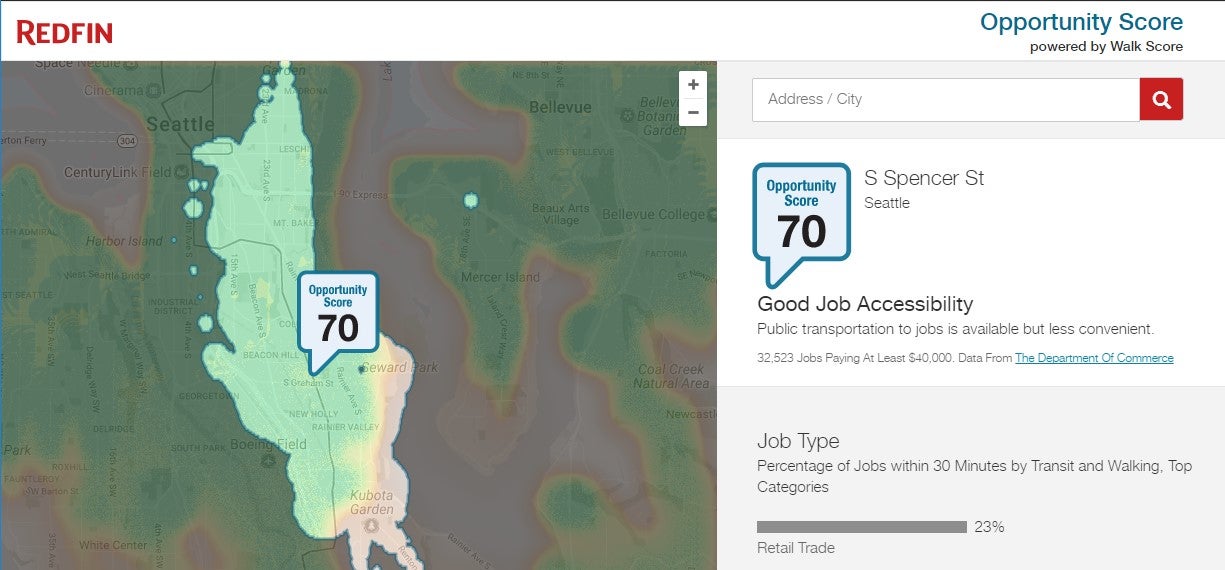
Every day, more of our decisions are data-driven and our lives become dependent on digital tools —think about the weather and transportation apps on your smartphone. Today, governments produce more data than ever before, yet the Open Data Barometer finds that most countries fail to "use open data to truly change people’s lives for the better." This open data sits unused, and citizens are not able to reap the economic benefits. There is a myriad of payoffs to using government data to tackle complex problems like finding jobs, affordable housing, better schools, and making communities thrive. Open data gives us the power to innovate and be competitive at the local and global level—but how do we unleash the potential to do more with data?
This is where The Opportunity Project lands in our radar. Launched at the White House in 2016 and housed in the U.S. Census Bureau, this data project unlocks data about the neighborhoods where people, live, work, and go to school in the United States. It catalyzes the use of federal and local data sets to identify pockets of opportunity and find existing gaps in economic mobility in communities across the country.
The project has yielded over forty new digital tools that help families find affordable housing near jobs and transportation, and support local leaders and businesses with the tools to navigate information and make data-driven decisions. Many of these tools focus overtly on making job markets more efficient by connecting people to jobs.
Turning data into solutions
Once a challenge is identified, a technology development sprint is launched. A sprint is similar to a hackathon, but addresses some of the shortcomings of a day or weekend hackathon, by creating cohorts that work together to develop tools alongside end users during a 12-week human-centered design sprint, and later deploys the final products to the intended end users. A typical sprint encompasses a team conducting user research to identify user needs, constraints, and preferences. Other phases include data exploration, tool development, alpha and beta demos, designing a final prototype, and a collective rollout. Human-centered design is at the core of The Opportunity Project’s collaborative process and offers a human perspective to problem-solving.
Last year, The Opportunity Project worked with cities like Baltimore, Detroit, Indianapolis, New York, San Francisco, and Washington to curate the best federal and local open data sets. Companies such as Redfin, LinkedIn, Fitbit, AirBnB, MapBox, ESRI, and Zillow also joined the project to launch new apps and tools.
A few examples
The Opportunity Project’s platform has built ladders of opportunity in employment, housing, education, health, transportation, and rural areas. These tools offer digital solutions for complex problems facing local communities.For example, PAIRIN has developed a Job Seeker platform using data from the U.S Department of Labor and the Workforce Data Initiative. It conducts a short baseline survey gauging 100+ behavioral attributes that constitute a person’s soft skill set and then not only matches job seekers to suitable vacancies, but also suggests how to tailor their skill sets based on their job aspirations.

Meanwhile, Opportunity Score, developed by Redfin, generates an ‘opportunity score’ based on the number of job positions (offering at least $40,000 annually) available to a person within a 30-minute car-free commute from a given address. This map-based digital tool uses housing, transit and Walk Score data, along with open data on employment from the U.S. Census Bureau, and is designed to help job seekers, particularly those who cannot afford cars, with housing choices. It also promises to enable city planners to identify ‘transport deserts,’ as they try and address inequality of opportunity.

Another particularly innovative tool is FindYour.Town developed by the technology firm Ovela in response to the U.S. Department of Agriculture (USDA)’s problem statement. It helps small, rural communities promote their towns to investors and tourists, and better tap into existing rural development resources available to them through USDA—such as zero interest loans for rural economic development and other home loans which real estate agents might not be incentivized to advertise.
Streetwyze is also another platform making technology more participatory by enabling neighbors to contribute to an interactive street map about their locale through “ground-truthing.” Neighbors can provide input on the accuracy of government data based on their ground-level experience –for example, indicating when a store listed as a grocery store in a federal data set, is actually a corner store or liquor stores with limited fresh food. Thus, citizens can help identify neighborhoods which are in fact food deserts, despite government data sets might suggest having ample grocery stores.
An exportable model
This is a chance to demystify data, be innovative, and find those pockets of economic opportunity to benefit society. Data may already exist to empower a job seeker in Accra, Lima, or a rural part of India with access to information on local job postings, skills training, or one-stop shops. Whatever your passion is —connecting people to better jobs, better housing, or better schools— remember The Opportunity Project model and find ways to adapt it and engage developing countries with open data to build the digital tools and platforms of the future.Follow the World Bank Jobs Group on Twitter @wbg_jobs.



Join the Conversation